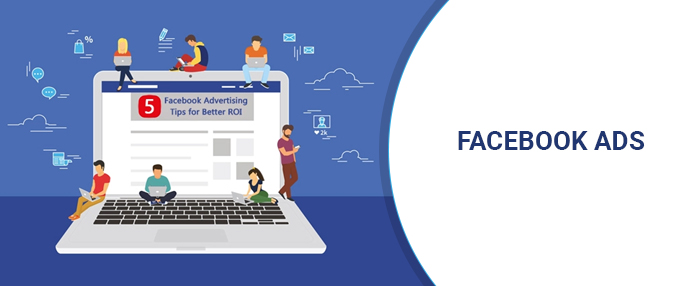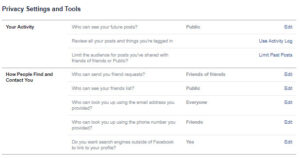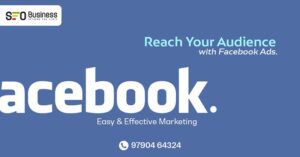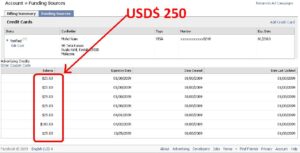Facebook ads are targeted to users who supported their location, demographic, and profile information. Many of those options are only available on Facebook. After creating a billboard, you set a budget and bid for every click or thousand impressions that your ad will receive.
Facebook Ads can appear in News Feed on desktop, News Feed on mobile, and in the Right Column of Facebook on desktop. Ad content is usually paired with news about social actions that your friends have taken, like liking a Page. Your friends might see news about the social actions that you simply have taken in Facebook ads.
Facebook ads are created based on five factors:
- Awareness
- Consideration
- Conversion
- Loyalty
- Advocacy
First, you have to create a Facebook ads account. Then, to get to your Facebook ads manager, you can click on the drop-down arrow in the upper right corner of your Facebook page and choose “Manage Ads” from the drop-down.
What is Facebook Business Manager
In Facebook Business Manager, you can create ads using two tools:
- Facebook Ads Manager
- Facebook Power Editor
Although both are similar, the power editor offers more in-depth features. For example, while the ads manager only has 10 objectives(or the marketing goal you choose when creating an ad, the power editor has 14.
A guide to Facebook Ads Manager
Facebook ads manager is a Facebook tool where you can create your Facebook ads. You can view, make changes and see results for your Facebook Campaign, ad set, and ads.
What is Facebook Campaign Manager?
Facebook Campaign Manager is an ad management tool to make, edit and analyze paid promotional Facebook campaigns. Facebook recently combined ads manager and power editor into one platform to make it easier to create and monitor ads campaign to create multiple platforms owned by Facebook, including Instagram ads.
How do you create Facebook ads step by step
Here are the steps for you to set up a Facebook ad campaign.
Select your campaign objective
To choose the proper ad objective, answer the question “what’s the foremost important outcome i would like from this ad?”
Set up your Audience Targeting.
Using what you recognize about the people you would like to succeed in – like age, location, and other details – choose the demographics, interests, and behaviors that best represent your audience.
Set up your ad placement.
Next, choose where you want to run your ad – whether that’s on Facebook, Instagram, Messenger, Audience Network, or across them all. In this step, you’ll also prefer to run ads on specific mobile devices.
Set up your Campaign Budget and bidding.
Enter your daily or lifetime budget, and therefore the period of time during which you would like your ads to run. These limits mean that you’re going to never spend quite what you’re comfortable with.
Set up your Facebook ad
When you submit your ad, it goes to our ad auction which helps catch on to the proper people.
With a few clicks, you can run across Facebook, Instagram, Audience Network, and messenger. You can reach people in their favorite apps and websites in a single campaign.
Facebook needs at least 50-100 conversions per ad per week to fully leverage the algorithm, so your ad sets need a reasonable budget for the Facebook delivery system to power your ads.
How to write a good ad copy.
- Mirror the User’s objective.
- Include numbers or statistics in your Headlines.
- Apply to user’s sense of entitlement.
- Include emotional triggers in your ads.
- Create unique, keyword-rich display URLs.
- Prioritize your best copy.
What is the Facebook ads library?
The Ad Library provides advertising transparency by offering a comprehensive, searchable collection of all ads currently running from across Facebook apps and services, including Instagram.
For ads that are about social issues, elections, or politics, you can also search ads that are inactive. Transparency is a priority for Facebook to help prevent interference in elections, so the Ad Library also shows you additional information about these ads, such as who funded the ad, a variety of what proportion they spent, and therefore the reach of the ad across multiple demographics. Facebook stores these ads in the library for seven years
You can view and use the Add Library at https://www.facebook.com/ads/library.
How to use Facebook ads library
To search for all ads:
Ads are traveled by Facebook Pages, which suggests that your search results are going to be grouped by Pages. To see these ads:
- Go to the Ad Library at https://www.facebook.com/ads/library.
- Make sure you have the correct country selected. In the top right of the Ad Library, you can select the country you’d like to view.
- Above the search bar, click All Ads.
- Enter what you’re looking for in the search bar.
- You’ll see a drop-down menu with results that relate to what you entered. Click on the result to see ads.
Viewing the Facebook ad library report
In addition to searching the Ad Library, in some countries you’ll also review a weekly report about issue, electoral or political ads during a given country, for a given period of time. You can see things like what proportion advertisers are spending and popular search terms.
The online version of this report typically lists the very best spending advertisers. To see the complete list of advertisers, you can download the full report at
http://www.facebook.com/ads/library/report.
The Ad Library Report includes:
- The estimated total amount spent by each advertiser from the start of the Library or the first ad creation date (whichever came later) until the end of the selected week.
- The total number of ads this advertiser has in the Library.
- The estimated total amount spent by each advertiser for the selected week.
- The total number of ads the advertiser has in the Library during the selected week.
- Weekly top search terms.
- Top advertiser spends in a region of a country.
What is Facebook Pixel
A Facebook Pixel introduced in 2017, is an analysts tools that consist of a Javascript code that you can put on your website. The Pixel fires to track site visitors. This data allows you to retarget those users with Facebook ads within the future, also on see once they return.
You can create additional Facebook Pixels(up to 100) through the business manager, but often you need only one Pixel for your websites.
With Facebook Pixel, you can build Custom conversions, Custom audiences and build better ads overall.
What are Facebook Custom Conversions
Facebook Custom conversions work with the Facebook Pixel to help you track conversions. Helps you optimize the ad for conversions. Facebook will show the ad to the people who are most likely to convert.
What are Facebook Custom Audiences
Facebook Custom Audiences offer a number of the simplest targeting available. They are highly defined groups of individuals who have already got a relationship together with your business, like past customers, people that have visited your website, or people that have installed your app.
There are three types of audiences on Facebook.
- Saved Audience
- Custom Audience
- Lookalike Audience.
-
Facebook Saved Audience
Saved Audiences are the audiences that you simply can define by choosing people’s interests location, age, gender, used devices, income level, etc. You can create Saved Audiences both within the campaign setup phase or within the Audience Manager.
Location-based targeting
Facebook allows you to target people in specific locations, including:
- Country
- State/Region
- Counties
- DMA (Designated Market Area)
- City
- Postal Code
- Specific Address Radius
Simply type in the regions you wish to target.
Demographics-based targeting
As you click on the Demographics tab, you’ll get plenty of targeting topics to refine your audience based on many options. The basic 3 are:
Age – If you’re targeting an audience with a specified age range, you can easily reach them by telling Facebook who your ideal customers are.
Gender – You can also select to target a particular gender.
Language – If you’re advertising in a particular language, you might want to only target the people who can understand your ads.
Interest-based targeting
Interests are one among the simplest (and easiest) Facebook ads targeting options as they permit you to focus on people specifically curious about a topic associated with your product. For example, you’ll target people curious about your competitors or your broader market segment, or magazines and blogs covering your market.
Behavior-based targeting
Unlike precise Interests, Behaviors allow you to focus on people by purchase history, events they like, personal anniversaries, etc. This data is gathered by Facebook analyzing many factors and also using external data sets.
· Facebook Custom Audiences
Facebook Custom Audiences are probably your most high-value target audience as they permit you to retarget past website visitors and other people who have engaged together with your content or app. There are multiple ways to make a Custom Audience, and we’re getting to cover each of them briefly.
Creating Custom Audiences from Customer Files
This first sort of Facebook Custom Audience is predicated on your existing customer files – the lists of email accounts, phone numbers, or Apple IDs. The Customer File audience may be a good way to focus on your newsletter subscribers or app users.
Creating Custom Audiences Based on Website Traffic
Website traffic-based Facebook audiences allow you to make remarketing campaigns for people that have engaged together with your website. These are high-value audiences because the users seeing your ads have already shown some interest in it. Important! To create audiences that supported your website traffic, you initially got to install Facebook Pixel.
Creating Custom Audiences Based on App Activity
If you would like to succeed in the people that have engaged together with your iOS or Android app, you’ll found out a Facebook audience to try to do that. To target people who supported the app activity, you initially got to register your app and found out app events.
Creating Custom Audiences Based on Engagement
Did you recognize that you simply also can target the users that have engaged together with your content on Facebook, e.g. viewed your videos or liked a Page post?
-
Facebook Lookalike Audiences
Facebook Lookalike Audiences allow you to reach the people that are almost like your existing customer database – making them highly likely to convert also.
To create a Lookalike Audience, you initially got to create a Custom Audience to inform Facebook what sort of users you would like to succeed in.
Next, select the “Lookalike Audience” from the audience creation menu and select a target country and a percentage (1%-10%) of the targeted country’s Facebook users.
The percentage signifies the people most almost like your selected Custom Audience.
Lookalike Audiences help you to extend your ad campaign’s reach so that you only target people who are likely to be interested in your offer.
What is the difference between Google Adwords and Facebook ads?
Google Adwords is based on the principle of Demand fulfillment while Facebook ads are based on Demand generation.
For example in case there is a new invention, there will be no searches on google because right now there is no demand.
You will have to get the interest of the target audience via display ads. This is known as Demand generation.
How much do Facebook ads cost?
Enter your daily or lifetime budget, and therefore the period of time during which you would like your ads to run. These limits mean that you’re going to never spend quite what you’re comfortable with.
You can spend a minimum of $1 per day on Facebook ads. and that is what all small businesses should start testing with usually by boosting posts the right way.
Facebook ads are cheaper if your daily budget is low and gets costlier as your daily budget rises.
Facebook gives preference to people who set high budgets.
Facebook is a pay-per-click marketing channel. This means that you will be paying every time someone clicks on your ads. You will be charged based on ad impressions, Video views, and other metrics.
How to Prepare for Facebook Blueprint Certification.
You can get Facebook Certification by applying for Facebook Blueprint certification
Facebook Blueprint Certification is a premium certification program in certification with Pearson Value.
The details of the Certificate exam are given below:
- You have to clear 3 major exams.
- The cost of taking each of these exams is $150 for each exam.
- Your audio and video will be recorded to prevent cheating.
- The exam is conducted by Pearson Value.
- You get a badge to display on profilers with 12 month’s validity in case you pass.
- The exam has 60 questions and is 105 minutes long.
- You must receive a minimum passing score of 700 per exam. The scaled scoring system ranges from 300-1000 with a score of 700 or higher considered to be passing.
- Your official score will be confirmed within 48 hours in your inbox from CertMetrics, Facebook’s Certification Tracking System.
Facebook recommends at least 6 months of Facebook Ads Course before attempting to take the exam.
Facebook provides free study material for Facebook material training.
In order to Prepare for Facebook Blueprint certifications, you have to enroll for Facebook Certified planning professional practice exams. These exams are free of cost and are a self-paced practice duration of 30 minutes.
The cost, the time involved studying, and the stressful exam environment is all things to consider before deciding whether the exam process is worth going through to get certified.
The fact is, the Facebook Blueprint Certification is the only accredited certification on Facebook advertising recognized by the industry. And with how big Facebook is, not only do many employers who rely on Facebook ads know about the certification, but many clients know about it, too.
Being Blueprint certified can give you an extra edge when applying to a relevant position over other candidates who aren’t certified. It can also give agencies the same edge when pitching clients compared to agencies who are not certified (and freelancers, too).
To apply for the Facebook Blueprint exams you can click on the links below:
https://www.facebook.com/blueprint
To Prepare for Facebook exams , you can click the link below to get free resources:
https://facebook.exceedlms.com/student/catalog
Benefits of Facebook ads
Many businesses now use Facebook Ads in order to improve brand awareness, increase traffic and ultimately generate business online.
- Advertise where your audience hangs out
If your audience is on Facebook (which let’s face it, is most audiences) then why not ensure your brand is seen here?
- Specific audience targeting
One of the most important Facebook Ad benefits is how targeted you’ll make your audience.
You can reach the precise audience you would like to. This includes interests, behavior, location, age, and much more.
This means you can target specific ads to specific audiences that are most likely to engage them or encourage them to click. You can target multiple audiences or personas that are likely to require you to try to do business with you.
- Quick results
You can drive immediate results if your ads are effective. You can begin getting your offer in front of thousands of people in order to drive traffic, conversions, or to generate sales.
- Build brand awareness
Advertising on Facebook is one of the foremost effective ways to create your brand and ensure more people are conscious of your brand.
- Fully measurable
You can easily see how your ads are performing, and alter your budget to suit.
If certain campaigns are performing better, or certain audiences are engaging more, you’ll shift your budget to those to make sure you get the simplest possible ROI.
You can simply see what percentage conversions, clicks, and impressions your ads are becoming. The Facebook Pixel allows you to track the website activity of people coming from your ads, so you can see exactly how they act after clicking the ad.
- Optimize your campaigns
This, of course, means you can see where they are any drawbacks, and therefore go ahead and optimize your campaigns.
- Multiple platforms
With just the Facebook Ad Manager, you can target ads across multiple platforms. This includes Facebook itself, the Audience Network, Instagram, and Messenger.
- Remarketing
Remarketing ads allow you to advertise to people who have already visited your site.
The advantage of this is often that you simply know they’re curious about what you’ve got to supply, as they need already been on your site.
- Lookalike Audiences
Lookalike audiences are a very powerful aspect of Facebook targeting.
Facebook takes your most successful audiences that employment for your advertising campaigns then finds an identical audience which “looks like” the audience that works.





